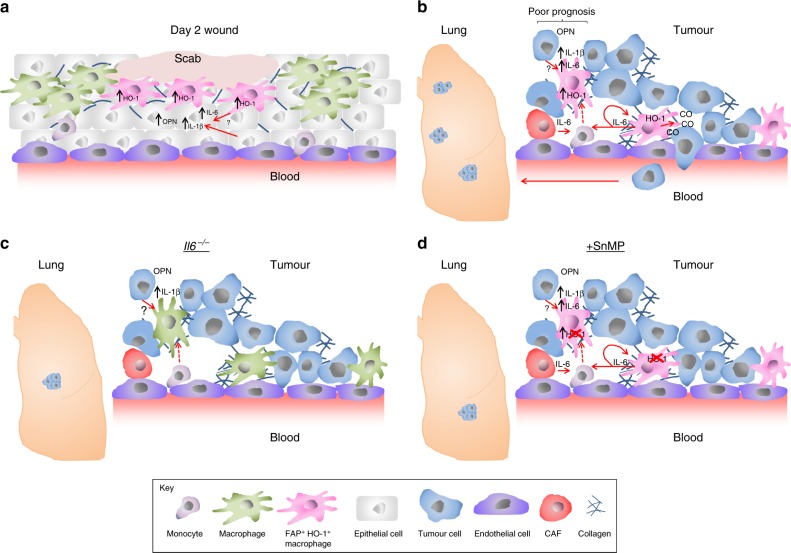Fig. 7.
Macrophages are exploited from an innate wounding response to facilitate metastasis. a The acute wounding inflammatory response results in a microenvironment with high levels of osteopontin (OPN), IL-1β and IL-6. In response to IL-6, in combination with the collagen-rich environment of the skin, the macrophages adopt an FAP+ HO-1+ wound response phenotype. b Tumours exploit the acute wound healing response of macrophages, by inducing IL-6 expression in these cells, as well as other stromal cells, by a currently unknown mechanism. IL-6 signals to monocytes/macrophages resulting in upregulation of HO-1 expression. The tumour microenvironment is also rich in collagen, which licences FAP expression on TAMs in an IL-6-dependent manner. FAP+ HO-1+ TAMs are predominantly located in the perivascular region and facilitate transendothelial migration of tumour cells through their production of CO, facilitating tumour cell intravasation into the bloodstream and eventual colonisation in the lung. c In the absence of IL-6 (Il6−/− mice), the tumour is compromised in its ability to generate the wound healing response TAM phenotype, and lung metastasis is reduced. d FAP+ HO-1+ TAMs can be therapeutically targeted using SnMP to inhibit their production of CO, which prevents transendothelial migration of the tumour cells and subsequent lung colonisation

